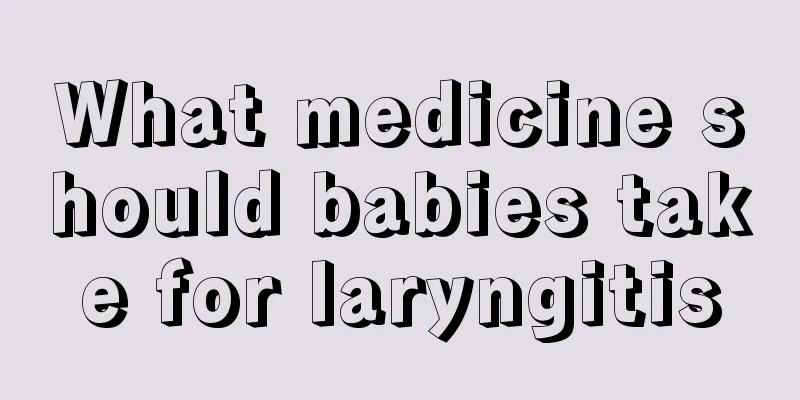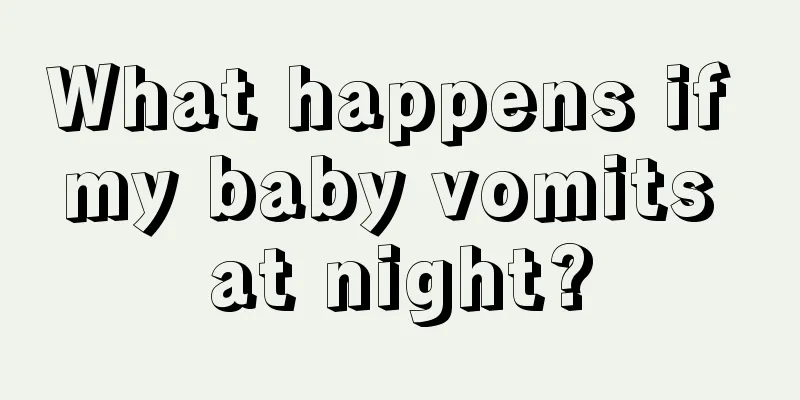What causes cross-eyes in children?

|
Some babies will have crossed eyes. Some parents think it is normal for their children to have crossed eyes, so they don’t pay attention to it. In fact, babies’ crossed eyes should attract the attention of parents, and there are some ways to improve it. You should pay attention to the baby’s eye hygiene, prohibit the baby from looking at mobile phones or TV for a long time, and give the baby some food that is good for the eyes. What causes children’s crossed eyes? Let’s take a look at it next. 1. What causes cross-eyes in children? The eye adjustment function of infants and young children is not fully developed, and babies are prone to cross-eye phenomenon without realizing it. Generally speaking, as the baby grows older, the cross-eye problem will gradually disappear. Under normal circumstances, it is impossible to tell whether the crossed eyes of a baby under three months old are caused by illness or developmental problems. Some parents may find that their baby's eyes are facing toward the middle, but when they go to the hospital for a check-up, the doctor says that they are not squinting. This may be what is medically known as epicanthus, also known as pseudoesotropia. This is because people are accustomed to judging whether the eyeball is correctly positioned based on whether the whites of the eyes on both sides are exposed symmetrically. When some children have a flat nose and a skin flap (epicanthus) at the inner corner of the eye, it will block part of the white of the eye on the side of the nose. In this way, when the child looks sideways, one eye seems to be slanted towards the middle. 2. What should I do if my child crosses his eyes? The baby's crossed eyes are usually caused by strabismus. Different treatment methods are used according to the different causes of strabismus: 1. Corrective surgery: Although congenital esotropia in concomitant strabismus has nothing to do with eye adjustment, it has a great impact on the development of binocular single vision function. The best treatment is surgical correction at the early stage of visual function development at the age of 2. Esotropia that occurs after the age of 2 to 3 is mostly related to excessive accommodative convergence caused by hyperopia. This type of strabismus requires full mydriasis and eye examination. Those with hyperopia should be fitted with adequate glasses and wear them for 3 to 6 months to correct or partially correct the strabismus, and then surgical treatment can be performed for any remaining esotropia. 2. Surgical treatment: If the esotropia does not change after wearing glasses, surgical treatment is the only option. If the strabismus is completely corrected, you can continue to wear glasses. If the hyperopia is very high, you can also correct the strabismus through surgery and reduce the degree of glasses you need to wear. 3. How to adjust baby’s eye alignment? 1. Don’t look your baby in the eye too closely, especially when talking to your baby. Keep a distance of at least 30 cm to avoid your baby’s eyes focusing on you. 2. Avoid the impact of adverse external factors on the eyes. For example, most parents often like to tie a rope in the middle of the baby's crib rails and hang some cute little toys on it to entice the children to chase and watch. If this is done frequently, the child's eyes will rotate toward the center for a long time and may develop esotropia, commonly known as cross-eyes. 3. Prevent foreign objects in the eyes: Since the blink reflex of infants is not yet fully developed, special attention should be paid to preventing foreign objects in the eyes. If you go out on a windy day, you should cover the child's face with a gauze; when sweeping the bed, hold the child away to prevent sand or the small burrs on the broom or mat from getting into the eyes. Since babies spend most of their time sleeping, it is difficult to detect foreign objects in their eyes. If secondary infection occurs, serious consequences may occur. 4. Do not cover the eyes: Since infancy is the most sensitive period of visual development for children, if one eye is covered for a few days, it may cause permanent vision abnormalities in the covered eye. Therefore, if a child's eye is sick, do not cover it at will. |
<<: 2-year-old baby has inflammation and fever of 39 degrees
>>: What to do if your child accidentally drinks iodine
Recommend
What are the causes of dry skin in newborns?
What are the causes of dry skin in newborns? This...
Newborn baby girl's lower body red
What is the reason for a newborn girl to have red...
What to do if your child chokes
Children often choke on milk when they are young....
What is the treatment for bronchial asthma in children?
Bronchitis in children is a common disease in bab...
It turns out that there are these disadvantages of enema for children
Enema is a very common treatment technique that c...
How to deal with acute gastroenteritis in three-year-old children
Children's stomachs are very fragile. If moth...
How to treat hand, foot and mouth disease in children? These are the methods!
Very young infants and young children have weak b...
Treatment of pseudomyopia in children
What is the method to treat pseudomyopia in child...
Baby's nose has phlegm and can't be discharged
When a baby has a cold, not only will there be to...
What are the standards for children's mental health?
With the rapid development of society and the gra...
Can alopecia areata in children heal itself?
You have heard a lot about hair loss in middle-ag...
How to correct left-side torticollis in babies
Torticollis in babies has become a common symptom...
What should I do if my child is allergic to amoxicillin?
Amoxicillin is a prescription drug that everyone ...
What should I do if my child has farsightedness?
Hyperopia is also a type of eye disease. Many peo...
What is the reason for the red spots on the baby's feet?
If your baby has red spots in the morning, it may...









